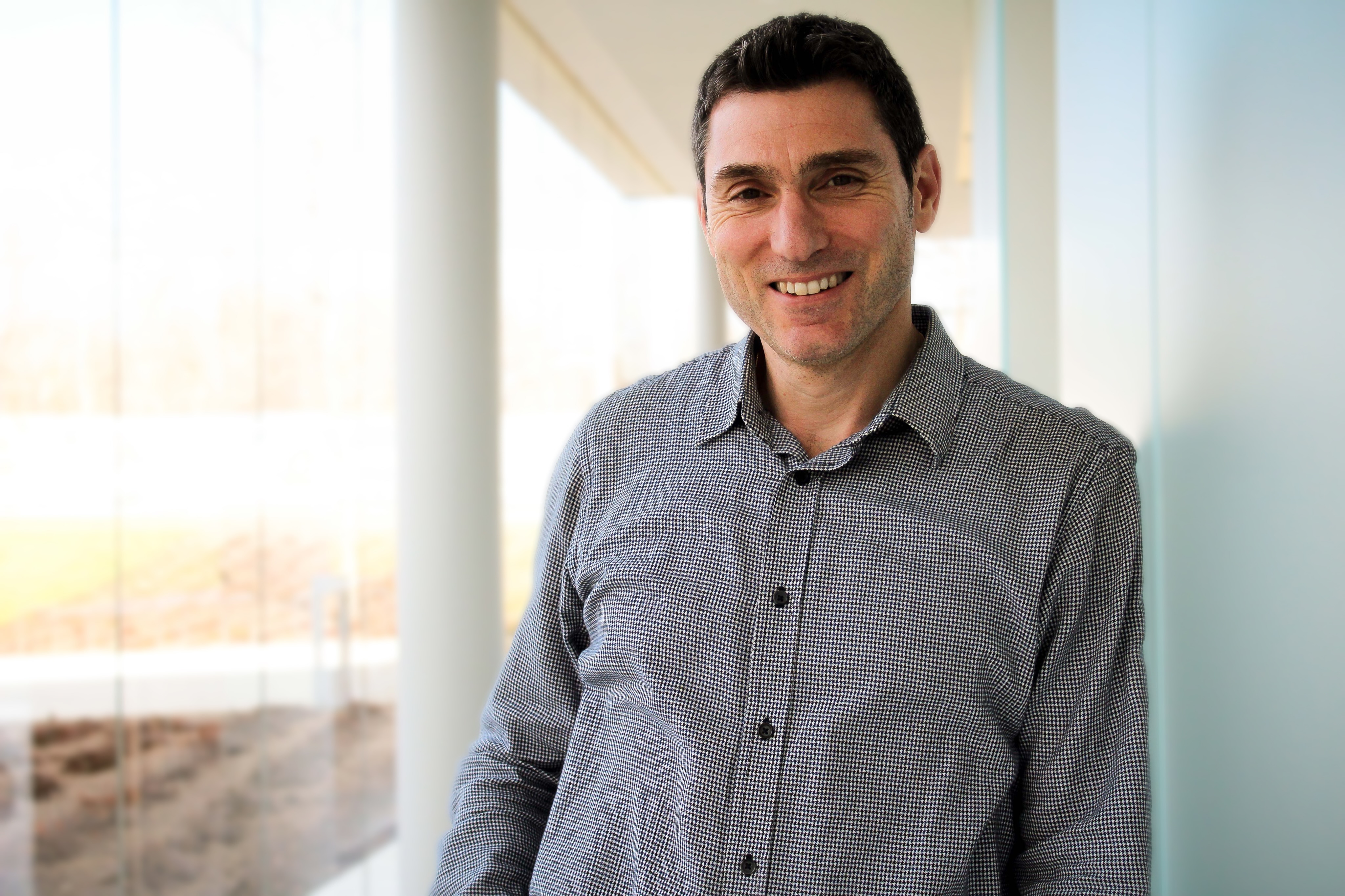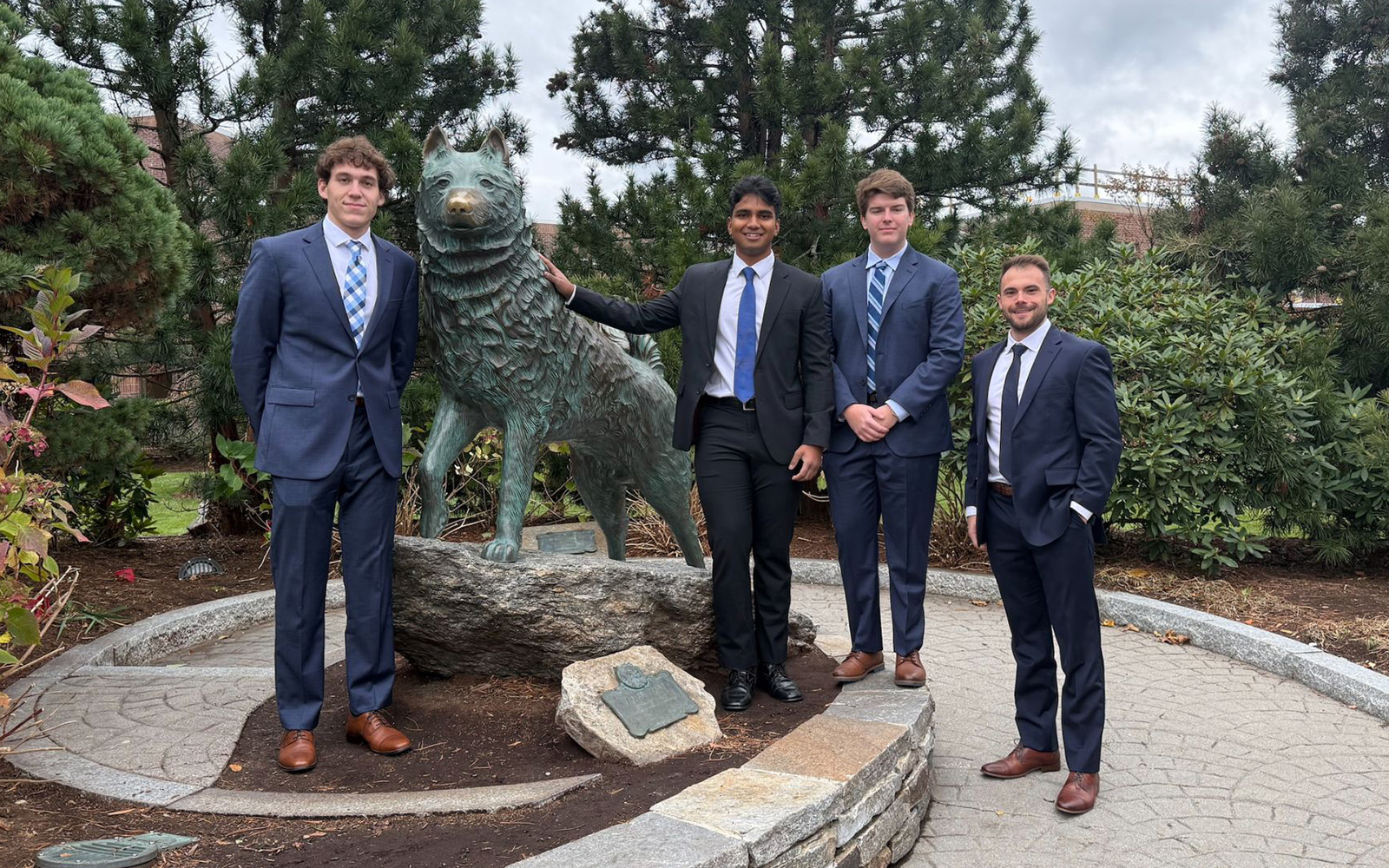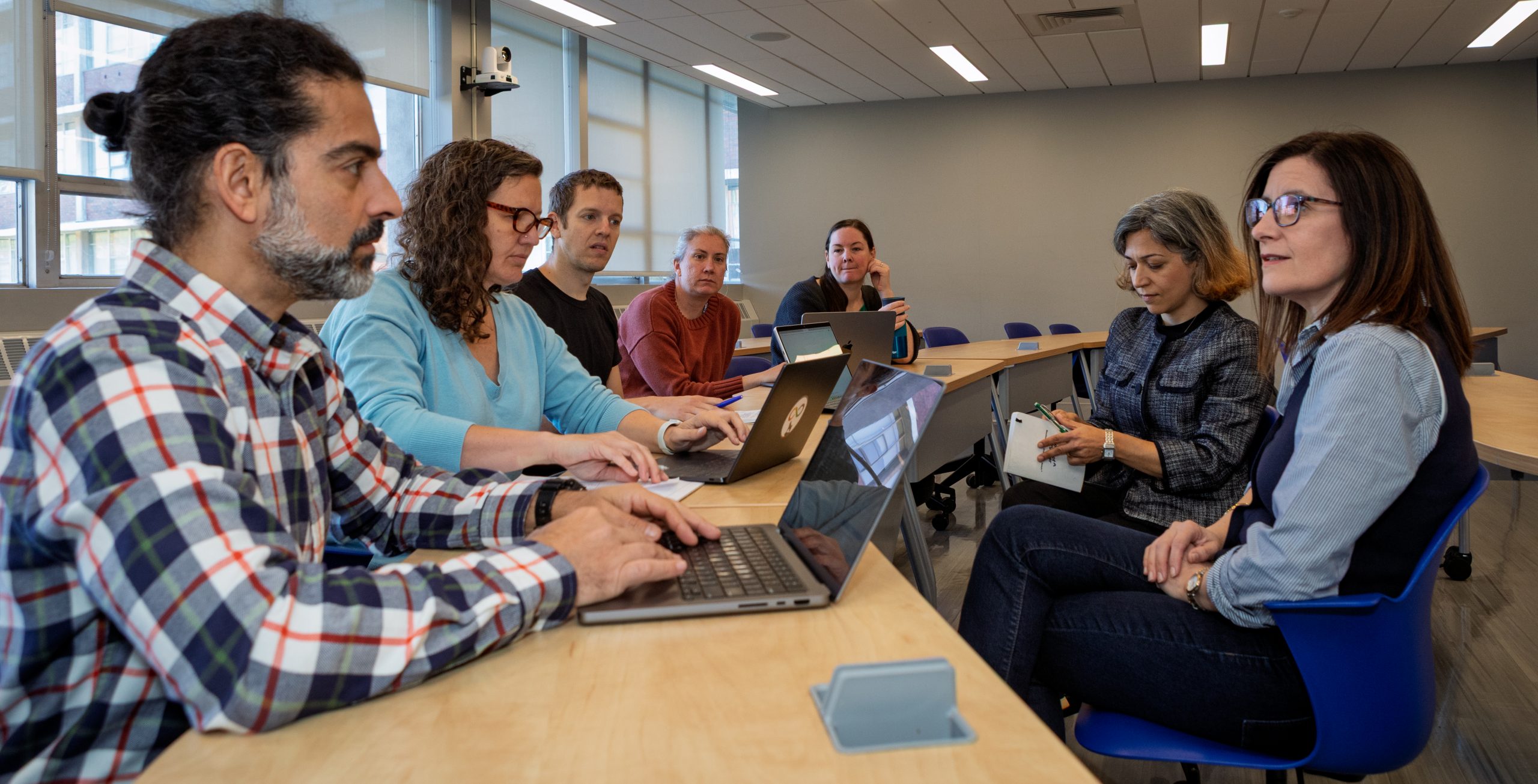Sitting glued to the evening news as a lively weatherperson displays colorful maps with patches of snow, ice and rain is a familiar pastime for anyone who has lived in New England. From blizzards and ice storms to hurricanes and tornadoes, extreme weather is a fact of life, and one of its worst side effects is power outages that can take out entire towns and cities for days or even weeks.
A lot of behind the scenes work goes into producing the weather maps local weather stations show viewers. They are built from valuable modeling data off-screen which researchers at the Eversource Energy Center mine and synthesize. The Eversource Energy Center is located at the UConn Tech Park.
The man behind the modeling is Emmanouil Anagnostou, director of the Eversource Energy Center and professor in UConn’s department of civil and environmental engineering.
Originally from Athens, Greece, Anagnostou started his career as an engineering hydrologist using satellites to sense precipitation patterns on earth.
But about a decade ago, he moved to weather models for other purposes, specifically to make predictions about extreme weather events, which are the driving forces behind the hydrological problems he was studying.
Anagnostou does not develop weather prediction models, rather he uses some of the existing predictive tools to determine the impact of a weather system on the ground.
“I’m primarily a user of weather models, but a smart user,” Anagnostou says. “That’s where my research lies: on the interface between what we get from numerical weather prediction and using the data in impact modeling.”
Anagnostou and his team at the Eversource Energy Center have developed an Outage Prediction model to process data about weather, infrastructure, and vegetation that correlate with power outages.
The model informs utility companies of vulnerabilities in their grid. This helps companies make more informed decisions about deploying crews to repair storm outages, and where they need to improve infrastructure or trim trees to prevent or mitigate the effects of storms on the power grid’s resilience.
The Eversource Energy Center Outage Prediction Model already supports around half a dozen utility service territories in New England. Anagnostou and his team of students, other researchers, and industry collaborators are looking to expand services to other parts of the country.
Bringing together UConn researchers, experienced emergency response crews, and the artificial intelligence of the models has proven to be a winning combination.
“We know both from experience and from the literature that human expertise plus AI beats either the human or the AI alone, which is good news,” Anagnostou says.
New Englanders need just to remember the winter 2017-‘18 for proof. That year, New England was pummeled by snow storm after snow storm. For these events Eversource Energy had to bring in extra crews from southern states to help repair downed power lines. As the next storm loomed, they faced a dilemma–whether to keep the hired crews up north and continue paying them or send them back and hope the second storm wouldn’t be that bad.
The Eversource Energy Center outage predictions indicated the storm was going to be as severe, if not worse than the last one, so officials decided to keep the crews. This turned out to be a wise choice as the storm was absolutely devastating for Eastern Massachusetts.
“That’s a case where you can really see the value of prediction, because without much information about the impact of the next storm, they probably would have sent the crews back,” Anagnostou says.
The collaboration with Eversource has been a harmonious one, Anagnostou says.
“We’ve reached the point that this relationship is a true partnership,” Anagnostou says. “It’s not just about the funding, and that’s what makes me firmly believe it will be a very long partnership.”
Research With Global Impact
Anagnostou leads another team of faculty and graduate students from UConn and collaborating institutions worldwide who are funded by the National Science Foundation Partnership for International Research and Education (PIRE) for applications of their research to societal problems like food insecurity.
On the other side of the globe, the PIRE team is working with farmers in Ethiopia, where accurate prediction of the wet season’s precipitation is essential to farmers’ survival. The PIRE team’s predictions can help these farmers make informed decisions about what kind of crops to plant and how much of the land to leave fallow.
Anagnostou is also looking for what the future could hold in terms of extreme weather, especially as man-made climate change exacerbates many of the conditions that cause dangerous storms.
Using data from the past decades, he and his collaborators are able to employ both dynamic and statistical models to predict how trends that appear in hydrological data may continue or change over time. These models can even work to quantify hydrological hazards and risks from severe weather events a century into the future, as disastrous weather events like hurricanes, droughts, and floods could become more severe or even more common given current climate change patterns.
Great Minds Come Together
While their labs are filled with specialized computers instead of microscopes, Anagnostou, his research team, and collaborators draw inspiration from their space at the UConn Tech Park.
“It inspires the students,” Anagnostou says. “They feel privileged to be here. It’s nice to be in an highly advanced, well-designed building where there’s a lot of positive momentum and energy around you.”
The massive glass-encased Innovation Partnership Building (IPB) is home to ten diverse high-tech research centers that have the opportunity to work with each other on multi-faceted problems.
For example, the Eversource Energy Center teamed up last year with the United Technologies Institute for Advanced Systems Engineering on a research proposal to the Advanced Research Projects Agency-Energy (ARPA-E) designed to develop a way to incorporate renewable energy into the existing power grid, avoiding a large-scale overhaul of the existing infrastructure.
On another partnering project, Eversource Energy Center is tackling the issue of power grid vulnerability to cyber-attacks. Having so many homes and buildings attached to a single grid creates a significant risk for a large number of customers. Working with another Tech Park center, the Connecticut Cybersecurity Center, Anagnostou is developing a training program for utility industry workers about how to prevent and recover from a cyber-attack.
At the center of all these initiatives are around two dozen Ph.D. and graduate students. They have published nearly 40 papers in the course of three short years and many have gone on to promising careers in research or the private sector.
“The students get access to state of the art facilities and data, which provides a tremendously valuable experience and opportunity. Data really is the key. Through our partnership, Eversource is giving us access to their data, very rich data, that allows us to pilot a number of ideas,” Anagnostou says. “Data, to me, is the most valuable source for someone to do research.”
Anagnostou’s research combines powerful data with the kind of expertise and judgment only living, breathing humans can offer to predict and create better outcomes. The work at his center helps farmers in Africa and emergency response crews in Connecticut alike prepare for whatever the weather has in store, since when it rains, it could pour.
For more information, visit the UConn Tech Park website.
Follow the UConn Tech Park on LinkedIn and UConn Research on Twitter & LinkedIn.



